Philips Evnia 42M2N8900 Review
An impressive 4K big-screen OLED gaming monitor
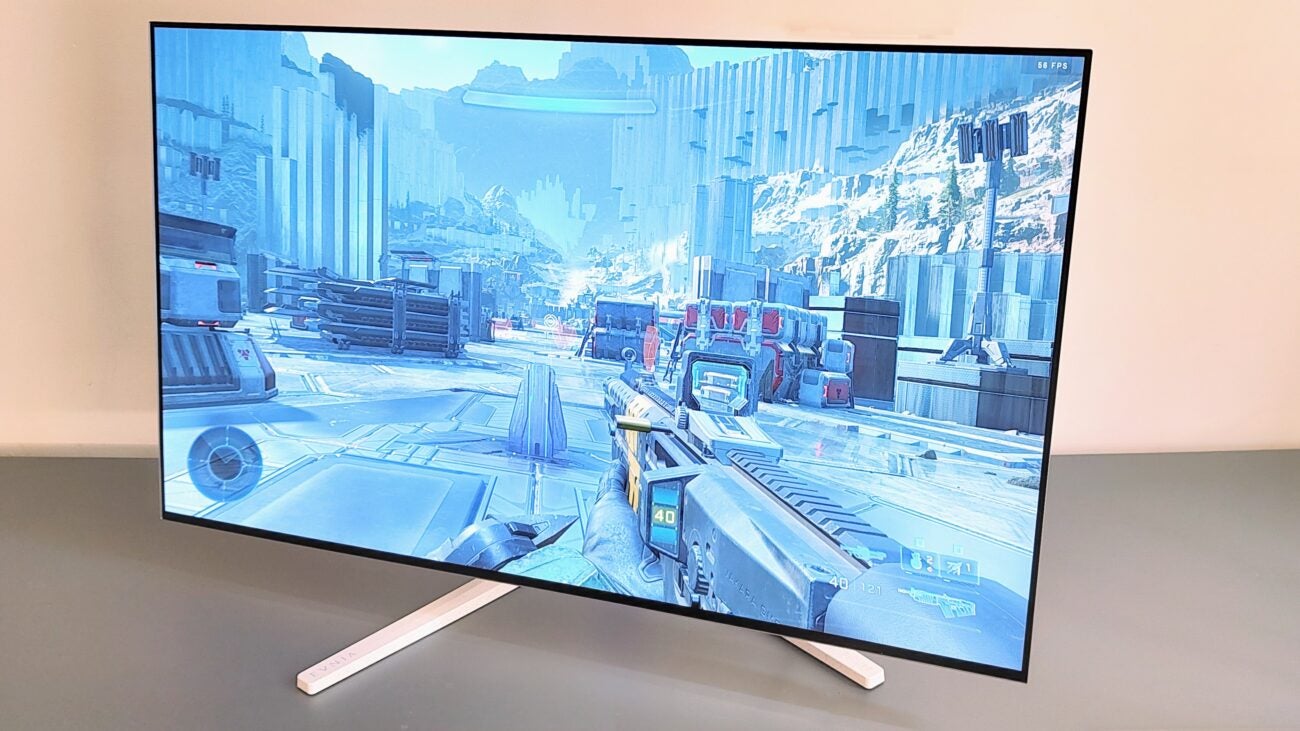
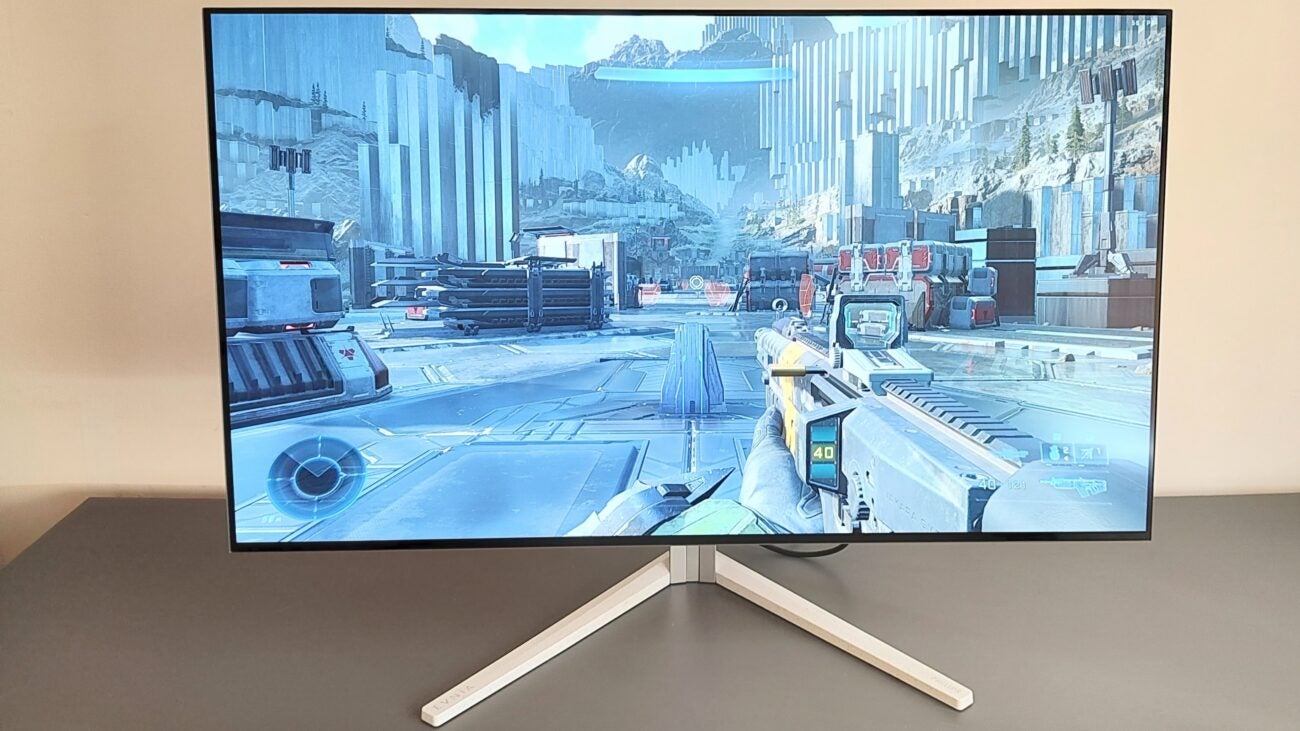
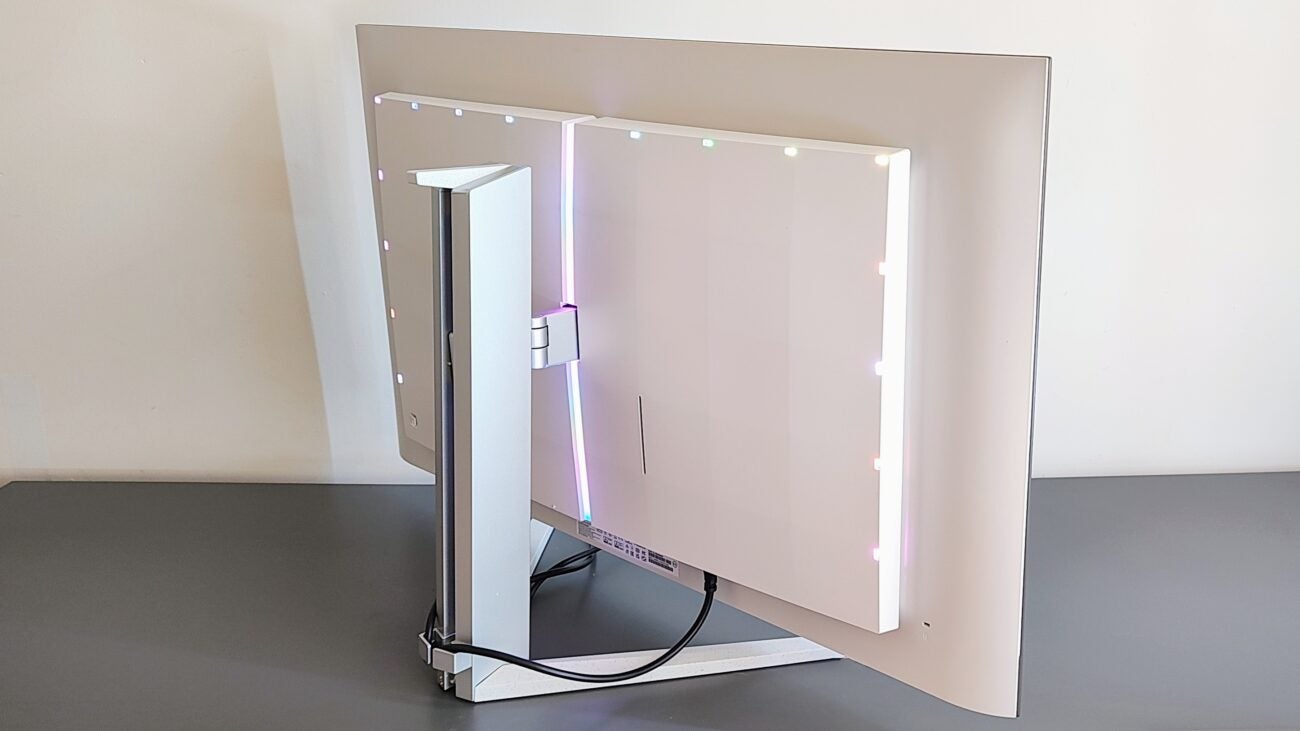
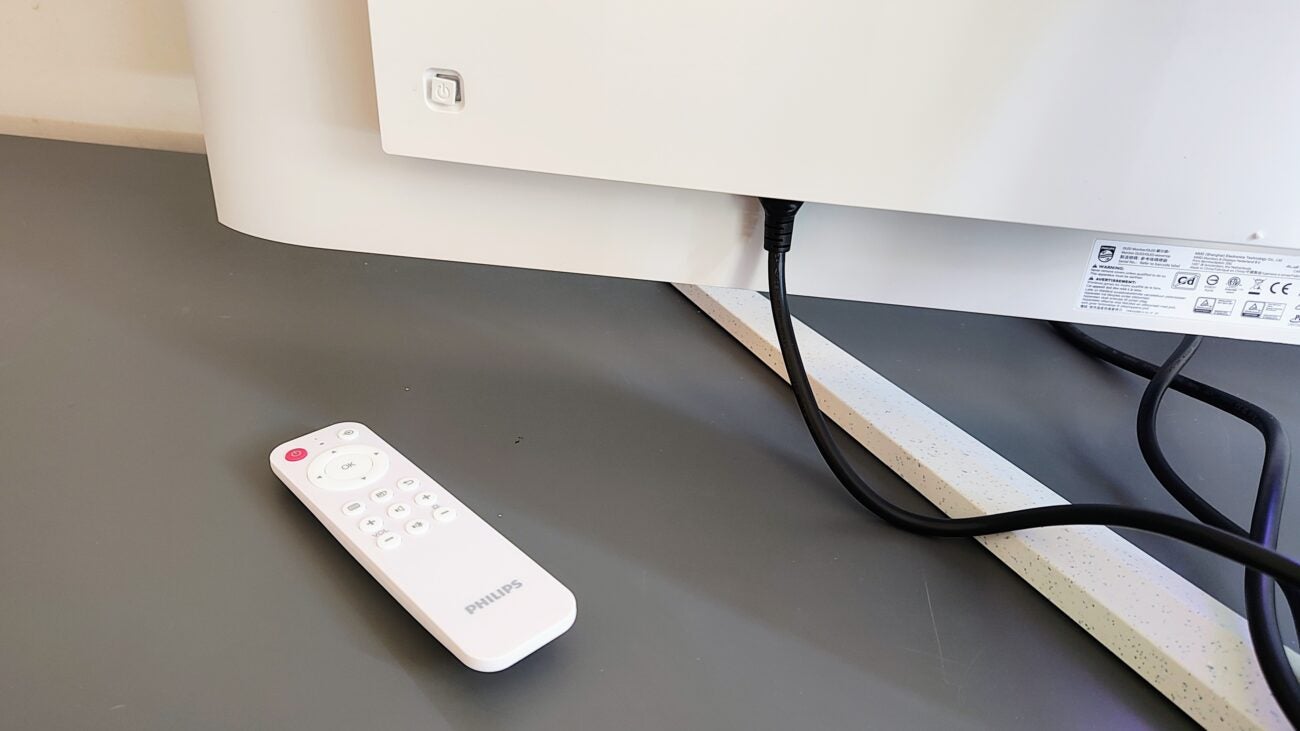
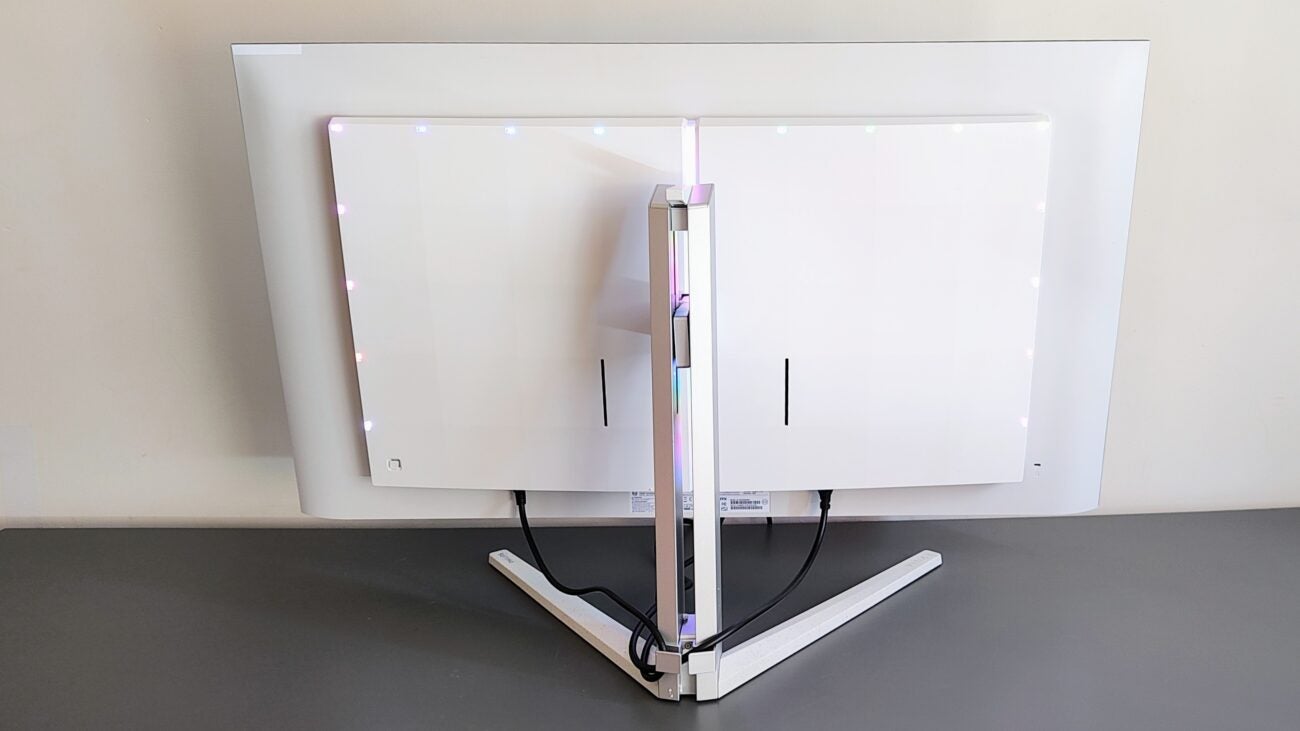
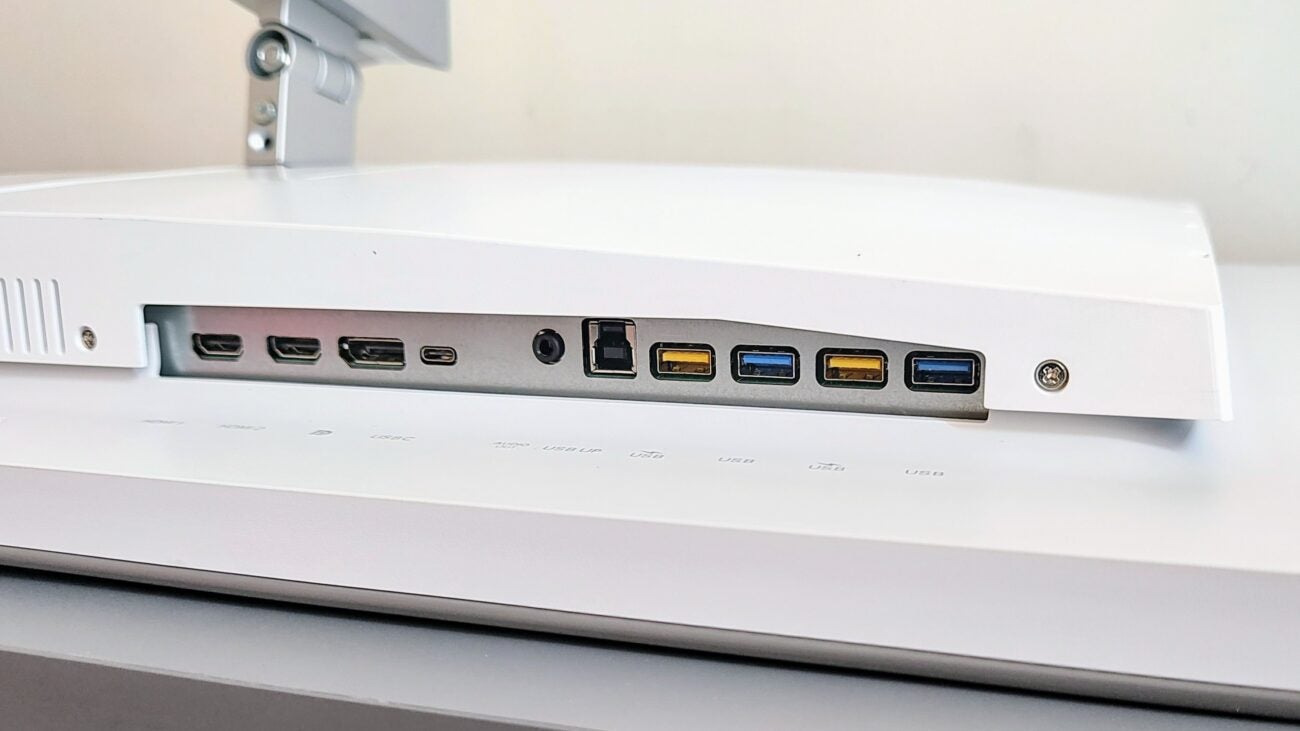
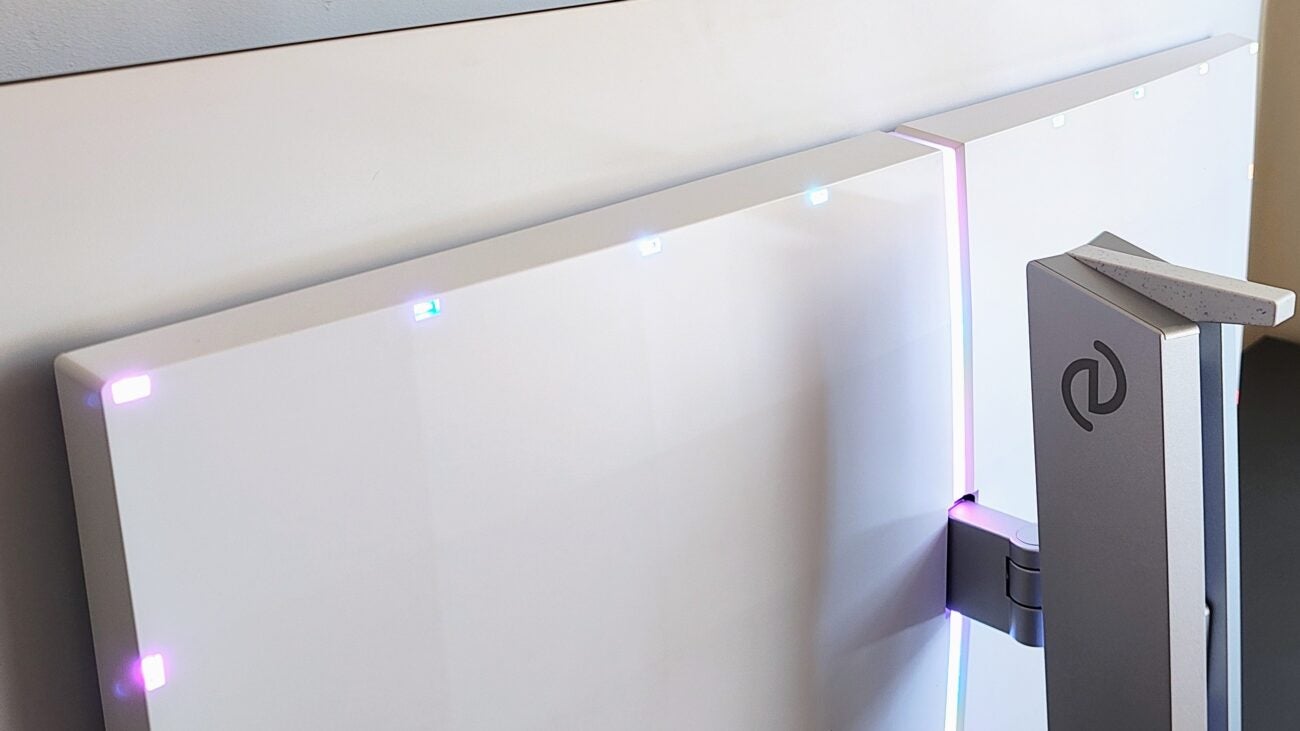

Verdict
The glorious 42-inch 4K OLED panel is the star of the show, but the 138Hz refresh rate is on the low side for a gaming monitor and the ports have been awkwardly positioned.
Pros
- Sumptuous 42-inch 4K OLED panel
- High quality 2 x 10W speaker system
- Ambiglow backlight makes for an immersive experience
- 4-port KVM USB hub
Cons
- 138Hz on the low side for eSports fans
- I/O Ports are hard to access
- Mediocre whole-screen SDR brightness
Availability
- UKRRP: £1780
Key Features
- 4K OLED panel with 138HzThe combination of a 3840 x 2160 resolution, a 138Hz refresh rate and AMD FreeSync Premium makes for a fluid, clean and super-sharp gaming experience
- 10W sound systemTwo 10W speakers provide plenty of bass and volume so you won’t need an external speaker system cluttering up your desk
- Range of portsWith two HDMI 2.1, one DP 1.4 and one Type-C Alt-Mode video inputs plus a 4-port USB 3.2 Gen 1 hub with full KVM functionality and 90W PD charging this a very well connected monitor
Introduction
One day we will all be using OLED gaming monitors, like the Philips Evnia 42M2N8900. But today is not that day. At the moment, OLED gaming monitors are expensive and can’t match their VA and IPS brethren when it comes to refresh rates. Once those two issues are dealt with, then the successors of the Evnia 42M2N8900 will roam the earth like the dinosaurs once did, devouring all before them.
As an OLED panel, the Philips Evnia 42M2N8900 delivers contrast levels that large-screen IPS and VA gaming displays can only dream about but those qualities come at a price, almost £1,800 to be precise. That’s a lot of money for a gaming display with a maximum refresh rate of 138Hz, a number so low that I can almost hear eSports fans click to the next review on the site as I type this.
One more thing needs to be said about the new Evnia 42M2N90 that has nothing to do with its screen technology but everything to with it being a 42incher: it is very big and very heavy. Wrestling a monitor like this into place is not an easy thing to do single-handedly and you need to think about where you are going to position it. I’d say you need to be sitting at least 1m away for it to be usable.
Design and Features
- Very stylish
- Big and heavy
- High-quality 2 x 10W speaker system
At the risk of stating the obvious for a monitor with the number 42 in its title, the Evnia 42M2N8900 is both big and heavy. With the stand, the package weighs in at 17.3kg and at 932 x 689 x 359mm, it’s quite a handful.
Once in situ, the size and weight can still cause problems when you want to plug or unplug anything. With all the ports facing downwards at the back and a small 190mm distance between them and a desk, it’s very difficult to insert your cables. From a usability point of view, it would have made more sense for the ports to have been placed on one of the sides.
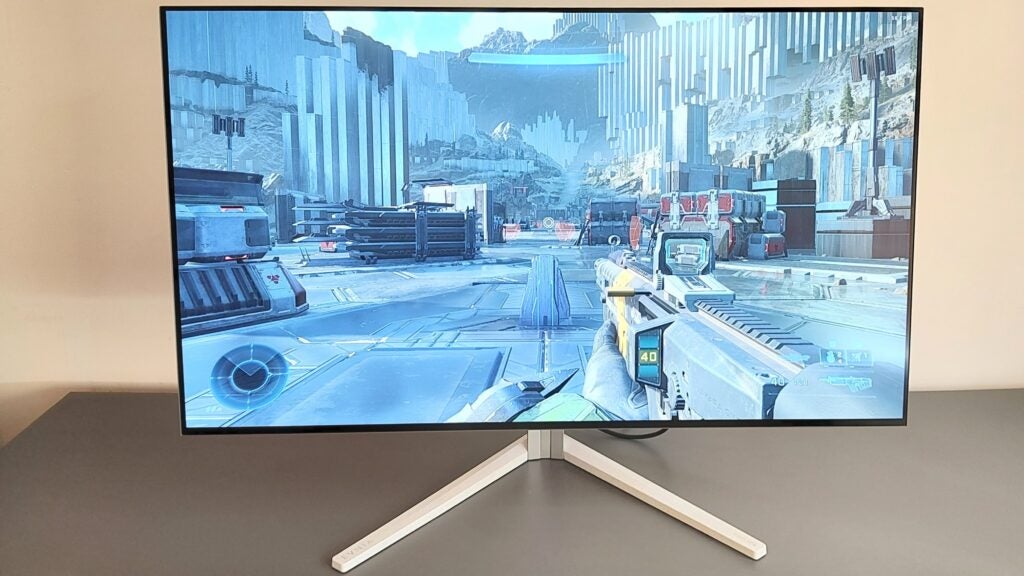
The width of the panel makes getting around the back quite a task. Thankfully, to avoid the need to get at the menu joystick, Philips gives you a handy remote control (albeit one that looks and feels cheap) that lets you access the OSD.
Despite its size, the Philips Evnia 42M2C8900 is a smart and modern bit of kit and, like the other displays in the Evnia sub-brand, it eschews the usual gaming monitor black in favour of a white colour scheme. It’s a design aesthetic very similar to that followed by Alienware and I can’t fault it. As befits a high-end monitor, the bezels are impressively slender, at just 5mm on the top and sides then 10mm at the bottom. The display is fully laminated so there is no unsightly plastic. It is one of the most truly “edgeless” monitors I’ve used.
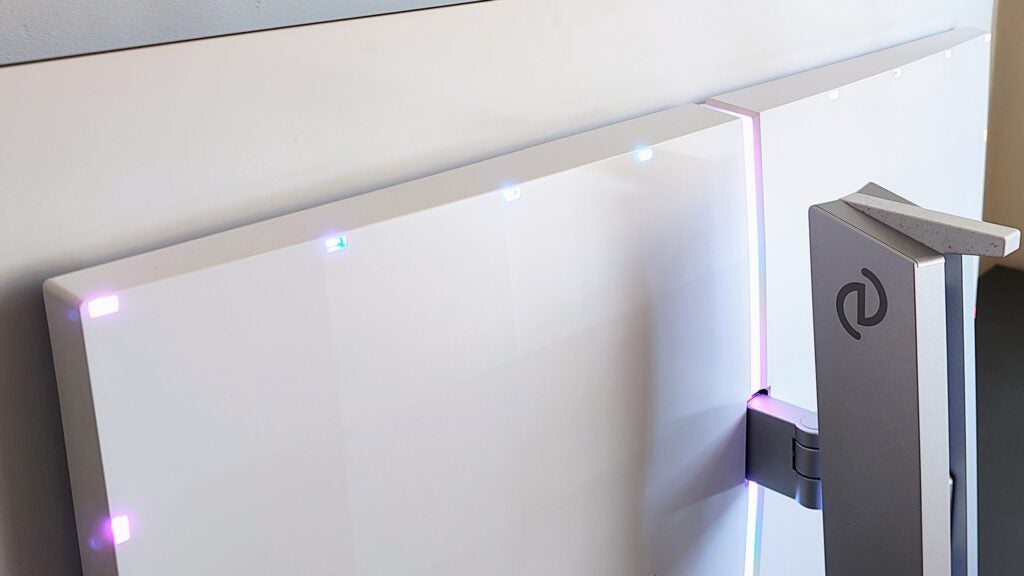
By putting all the electronics in the rear part of the two-section cabinet, Philips has managed to keep the actual display section impressively thin, at just 20mm. This makes the whole assembly feel less bulky than it would if it had a conventional one-piece cabinet.
Monitors of this size usually see weight adjustability take a hit. You get 120mm of height adjustment, 20° of swivel to the left and right and tilt from -5 to +15° but, when it comes pivot, there’s nothing at all in the offing. Philips bundles a 100mm x 100mm VESA bracket, that uses the same quick-release mount as the stand, if you want to fix the big Evnia to a wall or desk.
Inside the monitor housing are two 10W loudspeakers that produce a useful amount of volume: 84dB(A) at a 1m distance by my measurement. The speakers come with DTS Sound audio processing though that doesn’t prevent them from sounding just a little raucous at maximum volume. At 80% volume or less, there is enough bass, treble and composure to make for a very pleasant listening experience.
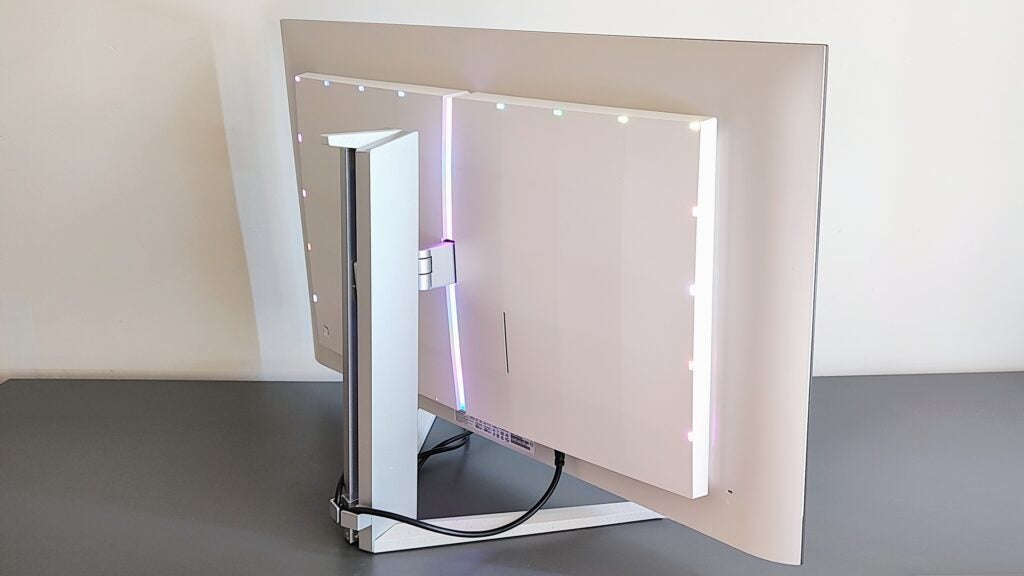
The six USB ports all move data at 5Gbit/sec and two of them support 7W fast charging while the Type-C port supports 90W PD charging. The KVM switch worked perfectly, automatically swapping between the Type-C or Type-B data stream depending on video input. The three main video inputs are all bang up to date with both HDMI ports being VRR-supporting 2.1 spec while the DisplayPort is the expected v1.4.
The Evnia comes with Philip’s Ambiglow (the monitor iteration of the TV Amblight system) reactive lighting system which consists of 25 individual LEDs and an LED strip that runs centrally from top to bottom breaking only where the stand is attached. The RGB light show is impressively bright at its highest setting and can be set to work in harmony with the display or the speakers or to pulse or static glow independently. It’s a matter of personal opinion but I think the system adds a genuine extra dimension to the gaming experience or even just when watching video.
Image Quality
- Wide colour gamut coverage and good colour accuracy
- Whole-screen brightness can’t match the best VA or Mini LED IPS panels
- The maximum refresh rate of 138Hz is low for a gaming display
Despite its 3,840 x 2,160-pixel matrix, the 42-inch Evnia only has a dot density of 106.3dpi, which is a good bit less than a Full HD 16-inch laptop screen, which can manage 137dpi. Pixelation isn’t an issue though, unless you press your nose right up against the glass. In general use, it is perfectly crisp and sharp.
The big Evnia certainly doesn’t lack colour, with 100% of the sRGB gamut at 146.3% volume and 95.4% of the DCI-P3 space at 103.7%. The Adobe RGB space was a little lower at 89.8% coverage from a 100.8% volume but that is still very good for a gaming display. The Delta E colour accuracy came in at an excellent 1.42 with the sRGB clamp engaged so you won’t have any issues with colour-accurate work requirements.
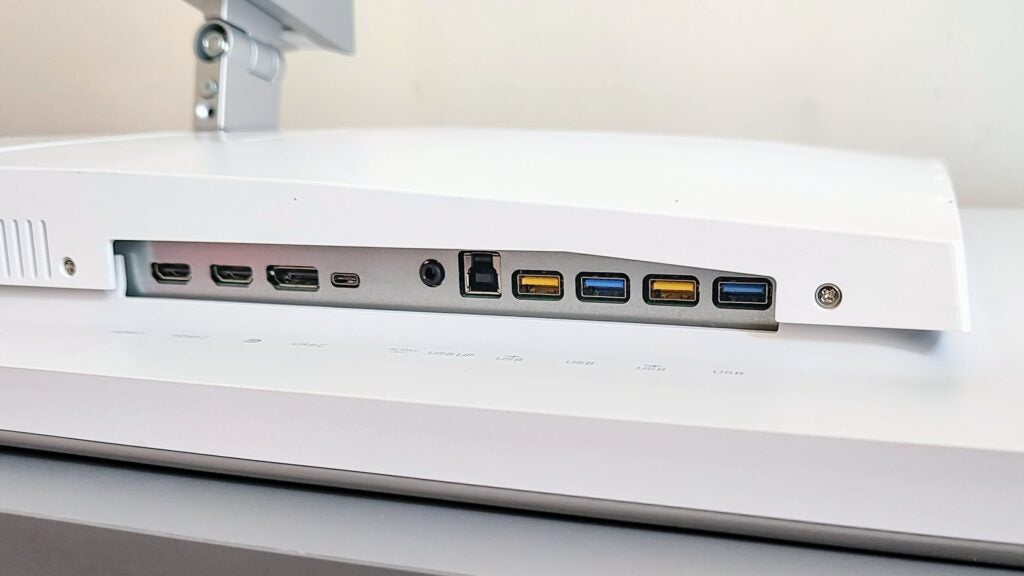
As always with OLED monitors brightness is more of a grey area. In SDR mode, the whole screen brightness came in at 205cd/m2; in HDR I measured the small-area (<10%) maximum brightness at 501cd/m2. In everyday use, the relatively low SDR brightness simply isn’t an issue unless you have very strong direct light shining on the screen because this being an OLED panel, blacks are absolutely black so the contrast ratio is infinitely high.
A handy feature to be found in the menu system is called Dynamic DarkBoost. This raises the brightness of dark areas so if you are gaming with light falling onto the screen any dark areas are brought more clearly into view without washing out other colours or adding a grey tinge to everything. There’s also a similar setting to be found in Personal HDR settings though I found that Game HDR mode did much the same of its own accord.
Motion handling is very good across the board with official support for AMD’s FreeSync Premium and, unofficially, Nvidia’s G-Sync eliminating screen tearing while the 0.1ms GtG response time means that motion blur is as low as can be expected for a 138Hz display.
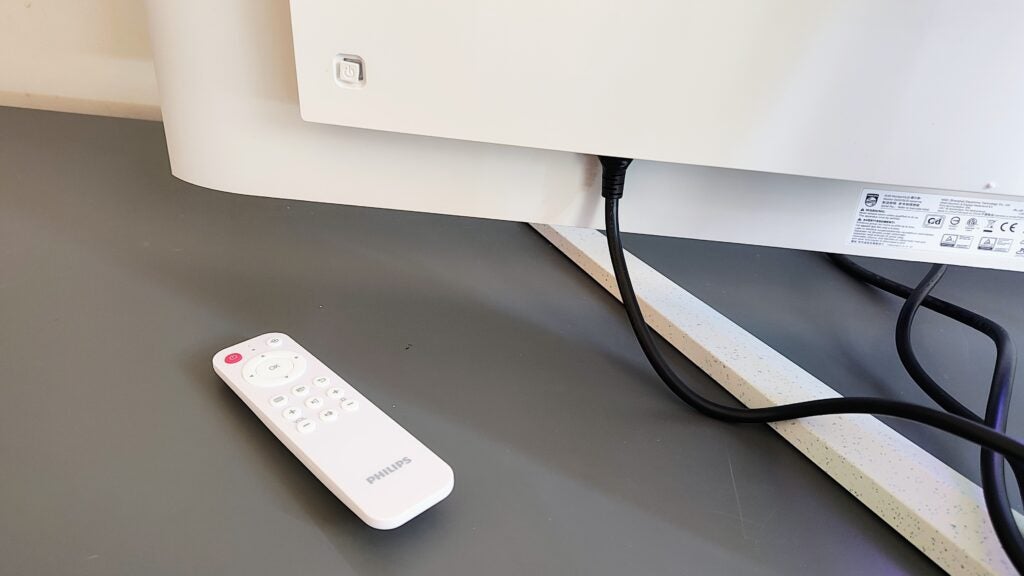
The elephant in the room, of course, is the refresh rate: 138Hz is not high for a gaming monitor and some eSports fans won’t consider anything below 240Hz. For console users, it’s not an issue, 120Hz is all they really need but PC gaming systems that can run Triple-A titles at 4K and 165Hz or above are becoming more common these days thanks to Nvidia’s latest DLSS 3 upscaling technology and the sheer grunt of the latest Nvidia and AMD GPUs.
Despite not having a VESA HDR certification beyond the basic HDR10 capability to manage an HDR signal at all, HDR content does look good on the Evnia 42M2N8900 with colours popping out and dramatic levels of contrast. The gloss-finish glass screen helps make everything look a little bit more sumptuous. Image processing isn’t perhaps quite at the standard of the very best OLED TVs like Philips’ superb 55OLED907 but being realistic you are not going to notice the difference. I spent many hours playing Returnal in HDR on the Evnia 42M2N8900 while preparing this review and it looked utterly, utterly gorgeous.
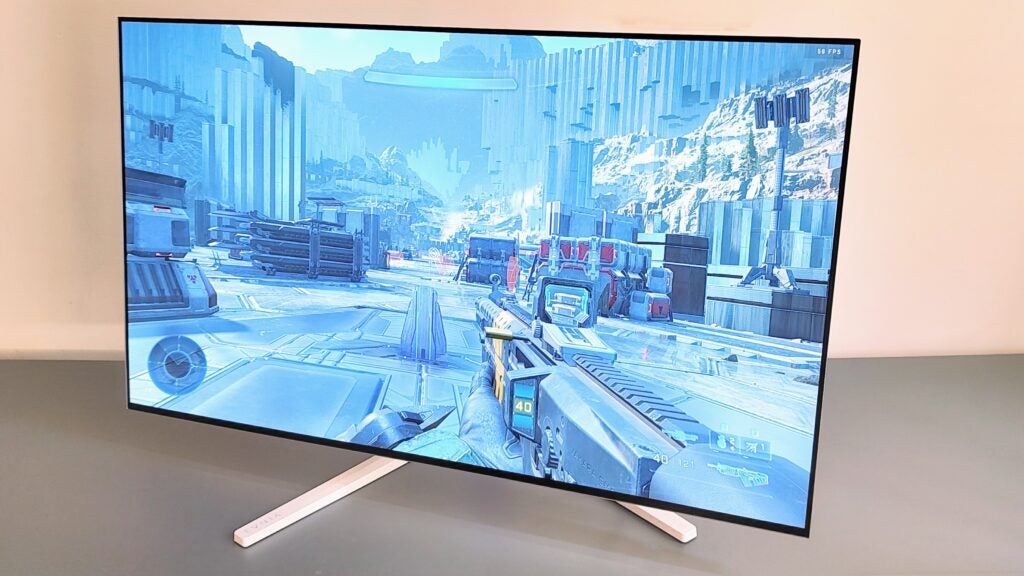
I can’t leave a review of an OLED display without addressing the issue of burn-in which is always more of an issue with OLED monitors than TVs simply because monitors spend more time with static images on screen like a Windows or Mac desktop.
Philips address this with three systems: Pixel Orbiting which moves the whole screen image left or right by a few pixels, Screen Saver which gradually adjusts lighting levels by a small amount when no motion is detected and Pixel Refresh which advises you to reboot the screen after four hours of continuous use and takes about 2 minutes 30 seconds to do its thing. Pixel Orbiting and Screen Saver happen without the viewer noticing (and can be disabled) but if you ignore the Pixel Refresh advisory notices for 16 continuous hours it will reboot of its own accord.
Latest deals
Should you buy it?
An absolutely stunning OLED panel
All types of content look superb on the new OLED Evnia. Colour gamut coverage is good and so is colour accuracy. If you want a monitor as much for watching movies as gaming, and you have deep pockets, the 42M2N8900 won’t disappoint.
You’re a hardcore PC gamer
Serious gamers will tell you that 165Hz is the lowest they would consider when buying a monitor and many won’t drop below 240Hz. Console gamers may not be bothered by the Evnia’s 138Hz refresh rate but for those of us who use PCs, it’s a bit on the low side.
Final Thoughts
The important thing to consider about the Philips Evnia 42M2N8900 is what are you going to use it for. Stick it at the foot of your bed connected to a PlayStation 5 and it will be in its element. The low refresh rate will be irrelevant, the viewing distance will be perfect and the sumptuous OLED panel will make all content look truly impressive while the high-quality speaker system will ensure that the audio quality matches the video.
Plonk it on a desk to play Apex Legends and it makes far less sense because it will be too close for comfort and you will get your pants pulled down by someone playing on a 360Hz VA monitor costing a fifth as much.
When it comes to big-screen picture quality the Evnia 42M2N8900 can hold its own with any of the displays in our recent Best Gaming Monitor round-up but if hardcore 4k gaming is what you plan on doing then the Acer Predator 32K may be a better bet. It’s not as big as the Evnia at only 32in corner-to-corner but at 160Hz it’s faster and the Mini LED IPS panel doesn’t give too much away to the Evnia’s OLED screen when it comes to picture quality.
How we test
We use every monitor we test for at least a week. During that time, we’ll check it for ease of use and put it through its paces by using it for both everyday tasks and extended gaming sessions
We also check its colours and image quality with a colourimeter to test its coverage and the display’s quality
We used it as our main monitor for at least a week.
We used a colorimeter to get benchmark results.
FAQs
That depends on how fast you need the refresh rate to be. Currently, OLED displays can’t match the refresh rates of the best IPS and VA gaming monitors at any given resolution. So while the Evnia 42M2N8900 can refresh at 138Hz the Acer Predator X32FP, another 4K gaming monitor, can refresh at 165Hz. IPS and VA displays are also capable of higher whole-screen brightness levels though OLED screens counter that with higher (in effect, infinite) contrast ratios thanks to the zero black levels they can generate.
Some of the potential disadvantages include a shorter lifetime than some other display technologies, poorer sunlight readability due to lower whole-screen brightness and the possibility of burn-in when a ghost image appears on the screen after prolonged, static use such as displaying the Windows desktop. Modern OLED panels are much less susceptible to burn-in than old ones so it’s really not something to worry about and the Evnia 42M2N8900 has three systems designed to prevent this.








